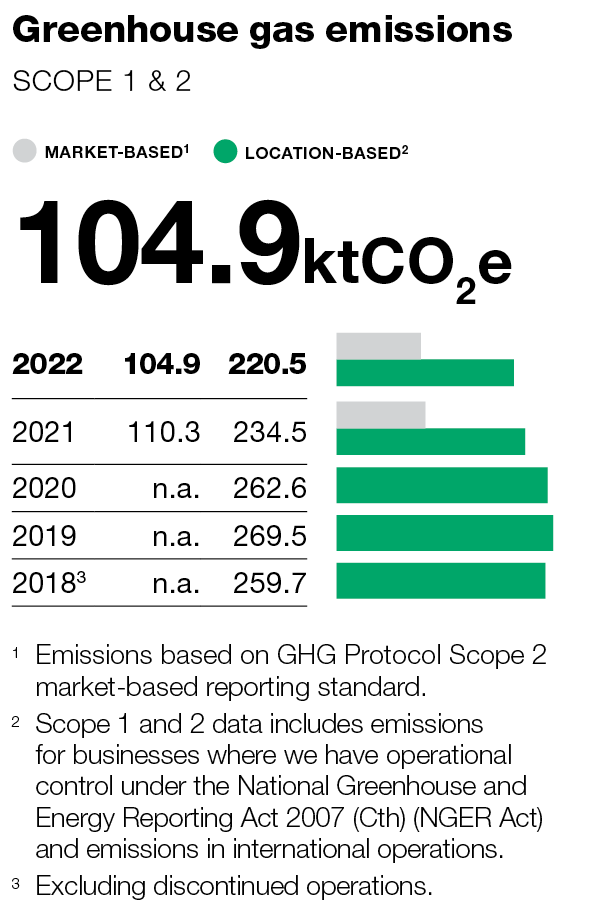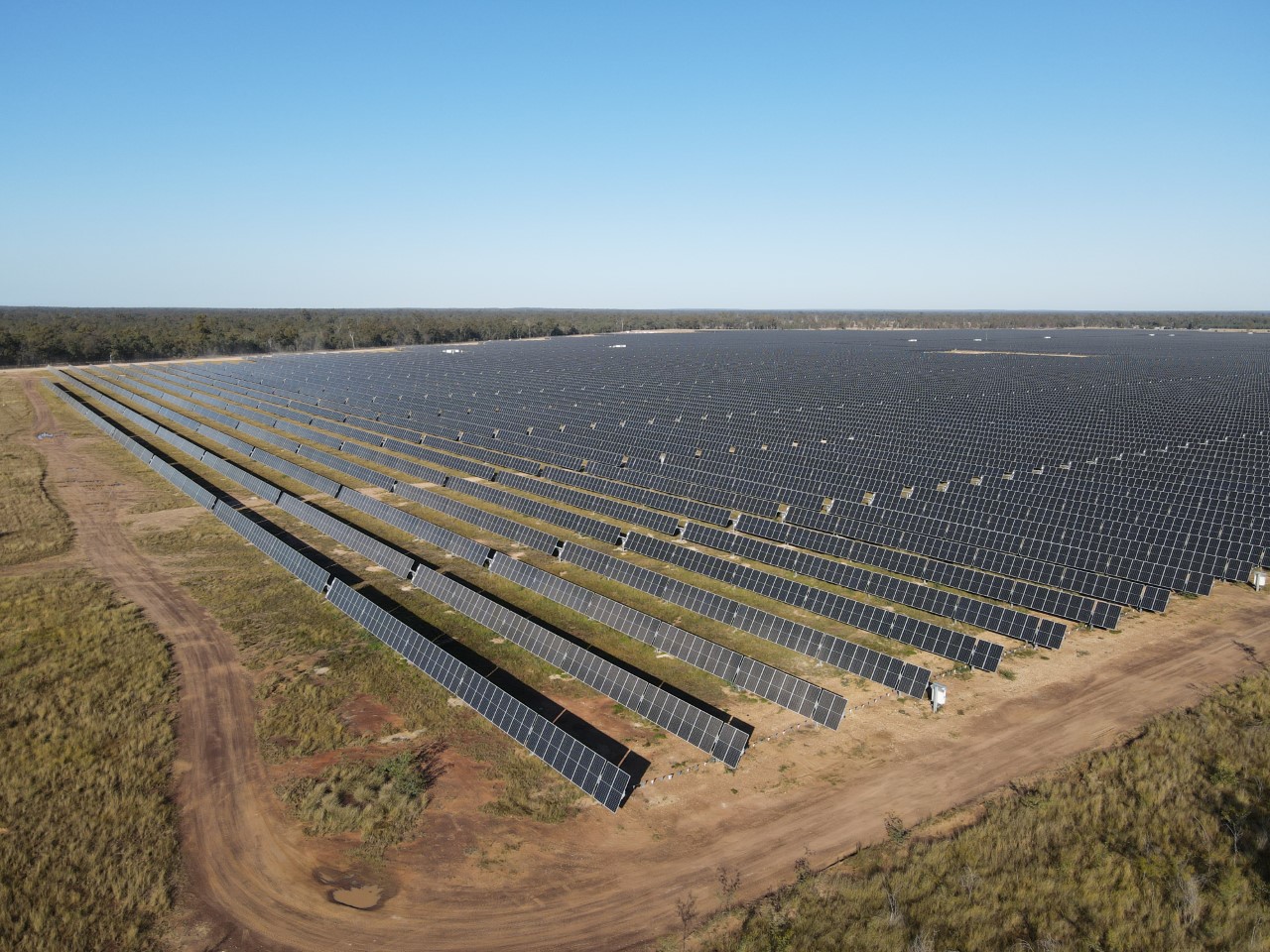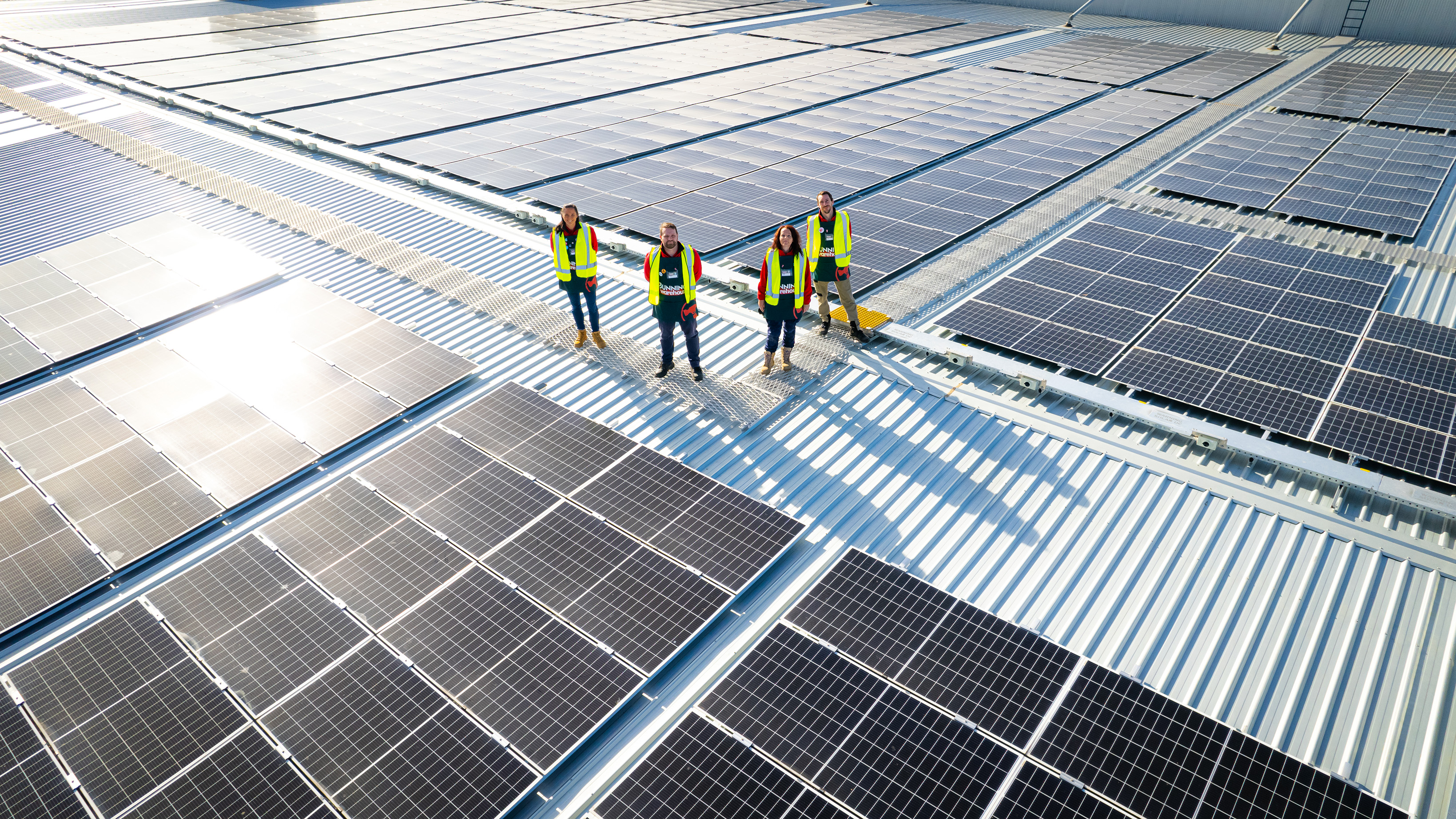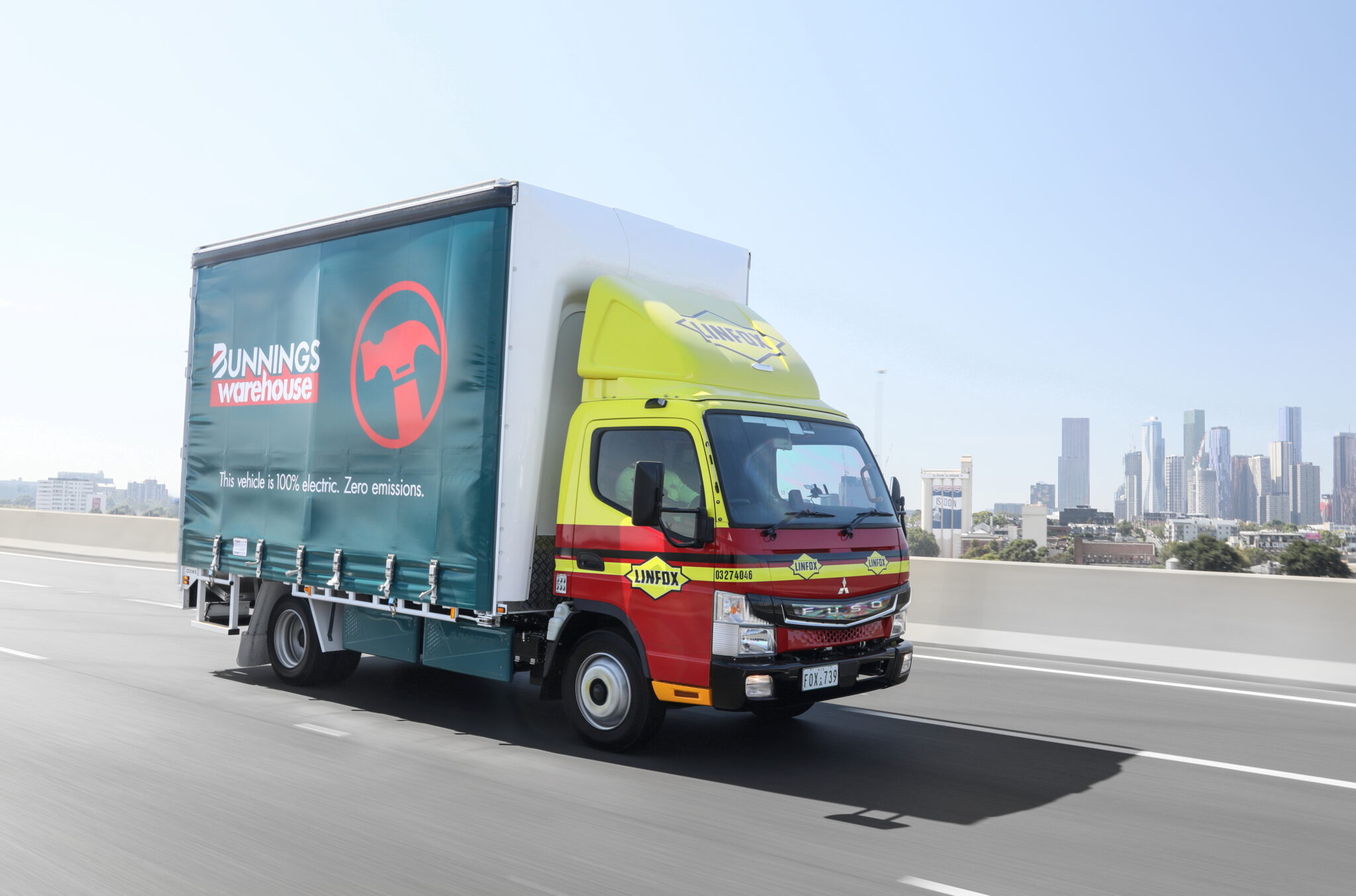
Bunnings - Climate and energy
Bunnings recognises that business has an important part to play in reducing emissions and addressing climate change.
Reducing energy consumption and transitioning to renewable electricity across its network are the foundation of Bunnings’ efforts to reduce carbon emissions.
During the year, Bunnings’ Scope 1 and 2 market-based emissions reduced by 4.9 per cent, as it progresses towards its targets to achieve 100 per cent renewable electricity by 2025 and net zero Scope 1 and 2 emissions by 2030.
This reduction can be attributed to continued efforts in energy efficiency, reduction in overall energy consumption and transitioning towards more renewable energy sources.
Bunnings has a comprehensive roadmap in place to achieve net zero Scope 1 and 2 emissions by 2030. To deliver this, Bunnings has focused on signing long-term renewable power purchase agreements, which have a multiplier effect that supports broader decarbonisation.
In December 2021, Bunnings entered a long-term contract with CleanCo Queensland Limited to power its Queensland network with renewable electricity. Over 50 per cent of the entire Bunnings network is now powered by renewable electricity. In New Zealand, Bunnings’ network is powered by 100 per cent renewable electricity.
Energy efficiency plays a key role in accelerating carbon emission reductions across the Bunnings network. During the year Bunnings continued to upgrade its store network with new LED lighting, with over 67 per cent of sites using this energy efficient technology as of 30 June 2022.
Bunnings also continued to increase local generation of renewable power across the network with 12 new solar PV systems rolled out during the year. As of 30 June 2022, there were 96 solar PV systems installed on Bunnings stores across Australia, covering more than 190,000 square metres of roof space, generating 25 MW and up to 30 per cent of each store’s energy needs.
During the year Bunnings continued its efforts to decrease supply chain emissions with the addition of two all-electric trucks in partnership with Linfox. The new technology trucks will deliver products from the Bunnings Laverton Fulfillment Centre to stores across Melbourne’s southwest and will be powered by 100 per cent renewable electricity. Bunnings also commenced trials of electric vehicle charging stations for customers at five stores across Australia and New Zealand.
The focus for the coming year is to continue to transition to renewable electricity sources and to develop a Scope 3 roadmap.



